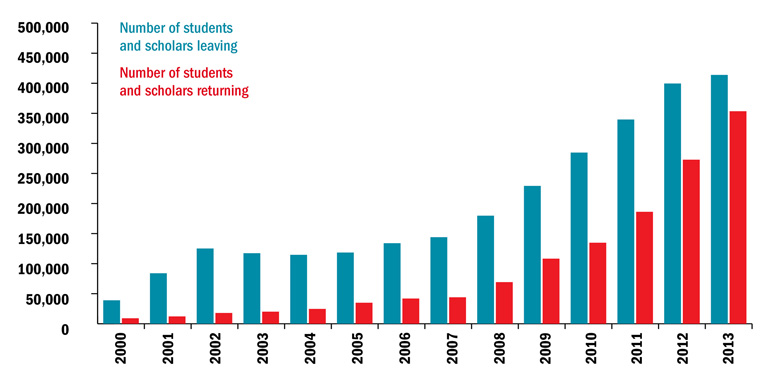China appears to be making progress in reversing its brain drain, with figures showing that a much greater proportion of students and scholars are returning to the country. In 2000, the number of those leaving China outnumbered those returning by more than four to one.
But by 2013, for every 20 leaving, around 17 were returning, according to data contained in a new book, Globalisation and Transnational Academic Mobility, by Qiongqiong Chen, an academic at the South University of Science and Technology of China, in Shenzhen.
It is unclear whether this is due to tougher visa systems in the West, fewer job opportunities abroad following the financial crisis, or more options back in China. There may also be a lag effect, whereby a surge in leavers only causes a bulge in those coming back when they finish their courses years later.
Number of students and scholars leaving/returning
Source: Globalisation and Transnational Academic Mobility
The book details the success and failure of attempts to attract top scholars back to China, such as the Thousand Talents Program, which by 2013 had drawn back more than 2,000 overseas Chinese academics by offering a $160,000 (£123,300) relocation package and up to $1.6 million to set up laboratories.
But others have hesitated to return because of concerns about requiring a complex network of connections to succeed in China’s universities; “rampant misconduct” in science; and “taboos” in the social sciences, the book says.
POSTSCRIPT:
Print headline: Comeback special: China makes progress in reversing brain drain
Register to continue
Why register?
- Registration is free and only takes a moment
- Once registered, you can read 3 articles a month
- Sign up for our newsletter
Subscribe
Or subscribe for unlimited access to:
- Unlimited access to news, views, insights & reviews
- Digital editions
- Digital access to THE’s university and college rankings analysis
Already registered or a current subscriber?







